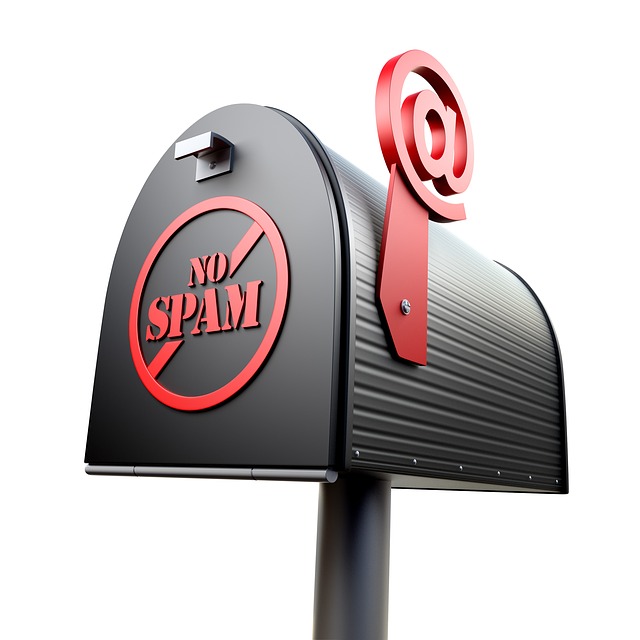Avoid BEING spam

Your emails MAY be flagged!
How to avoid best you can.
Can you avoid this… mostly yes. Whew – that’s good news! Is there bad news? Unfortunately, yes. You’ll need to consistently and frequently work to ensure that your email and/or newsletters are inbox-ready.
Watch Out For…
Are you on a Blacklist? Email service providers – the systems that you send your emails through and are received by your clients – keep an internal blacklist of domains and companies that automatically filter out spam from inboxes. There are also international email blacklists that email service providers will refer to for flagging spam. If your website and/or email are on a blacklist you will need to re-think your email marketing strategies. Only very serious spam offenders tend to get on these lists.
Is There a Whitelist Then? Absolutely Whitelists are maintained by email providers. A whitelist contains a list of email/domain addresses that are noted to be automatically allowed to be delivered to client email inboxes
Domain Reputation: This relates to your email IP source address. If the system or email you are using to send emails has a good reputation then it will help with your email being accepted. If you are using a service which has a bad reputation your emails/newsletters run the risk of being more closely monitored and easily flagged for even minor infractions. The Image Stop / Penguin Hosting monitors their reputation and is careful to work with ONLY reputable companies who do not use their system for SPAMMING. (See Section 14 of our Hosting Agreement)
Spam Complaints: If your email address has been previously flagged as SPAM this will greatly increase the likelihood of a repeat flagging. The more email sent out will obviously result in the unavoidable occurrence of being flagged now and then but repeat offenses and having complaints lodged against your email address can put filters and Blacklist monitors on alert for your email.
The Activity of Your Email List Subscribers: If your emails consistently get very low open rates, are often deleted without being opened or have a large number of unsubscribers, email service providers will view your emails/newsletter as being a low quality that is potentially unsolicited. While it won’t automatically get you blocked from the inbox, it will combine with other scores that may result in being flagged.
Content of Your Email: The content of your email is a significant factor in making it through spam filters. Image use, text content, and subject line can all create spam problems for you. Writing and designing email has to be as much about deliverability as it is about email performance and content.
Building a Solid List
Always start your email campaigns by building a good and reputable list of emails. Be sure to use and send to email addresses that have requested or agreed to your emails/newsletters only. Never purchase or rent email lists. Always use a double opt-in process where users must click a confirmation link on an email they receive after they sign up in order to activate their subscription to your services
Get Users to White List You
Regardless of whether you are using a third party email sending program or campaign system (such as Mailchimp) or an in-house solution, your deliverability to the inbox is assured for every subscriber who actively adds you to their address book or contact list and/or ensures your email address is added to their SPAM program whitelist. If there are issues with delivering your emails/newsletters try asking subscribers to both add your email address to their contact or address book and, when possible, add your email address to the whitelist within their SPAM program. It may be of benefit to add in your “welcome” email that subscribers receive when they sign up for your newsletter or email list, a note about adding your address to their address book and whitelist filter. It also doesn’t hurt to remind them to do that in every email that you send.
Every effort that you can make to have users individually whitelist you will help with improving your sender reputation.
Make the Unsubscribe Link Prominent
Most email campaign programs ensure that they include an “unsubscribe” button at the bottom of each emailed campaign. Try to have this button or link stand out and be obvious. Transparency helps with how not only subscribers but how filters ‘see’ your emails.
Minimize the Use of Red Fonts and Large Headlines
Red fonts and large headline size fonts can cause spam filter issues, though not as frequently as many of these other issues. As a rule, it’s best to avoid using red fonts, huge headline fonts of more than sixteen pixels or a combination of both. There are plenty of design options that still give you great flexibility without using these font sizes and colors.
Image Laden Email – NOT Good
Emails that are one large image have a high chance of being flagged. Your deliverability chances decrease dramatically if your email is one big image. While images are an important part of any email template, the more images you use the more you may experience spam filter issues.
Subject Matters
Your subject line can be the very first things that affects the ability to get into subscribers inbox. Never write an email subject line that is extremely long Basic overviews are all that is necessary Long descriptive and/or sales word laden subject lines get flagged quickly.
- Shorter is better! (But not less than five or six words)
- Don’t rely on words that are included in the “spam words” list
- Avoid using all caps or special characters in your email. They can end up resulting in having you flagged as spam.
You can get away with using “spam words” in your subject line if you have a great sender reputation and use them in moderation. If you have been flagged at some time… avoid the use of these words in your Subject line.
Content Spam Words
This may seem fairly obvious.however, you may be surprised how many emails are sent daily and then end up in the spam or junk folder because they have been loaded down with words like “free” or “deal” or “special”. Writing content for email marketing is a very focused process that’s not that different from writing for SEO (Search Engine Optimization). There are many free online tools that will scan your email content and give you a score or a color-coded rating regarding the likelihood that you will be flagged as spam. While these tools are imperfect, they can give you a red flag if you are clearly in the danger zone. (Mail Tester)
The basic rule of thumb is to understand the words and types of language that most email service provider spam filters will consider likely junk mail. Then simply write in a manner that doesn’t incorporate those words or style. It may mean that you need to think a little harder while writing your copy, but that effort will be worth it when you hit the inbox. After all, it doesn’t matter how persuasive the word “free” would be with your subscribers if they never actually see the email.
Summary
Although there is no perfect combination or method between marketing and being flagged, these are some of the things to watch for to help keep your emails arriving at your subscribers emails. As SPAMMERS become more and more successful at bypassing spam filtering programs, the programs will continue to get smarter and, therefore, accidentally flag legitimate email more often. When this happens ( as it is almost inevitable to happen) be sure to re-evaluate and find out what the latest issues may be. Google or even ask us – we may have more of the latest information available and are always ready to help. 🙂
